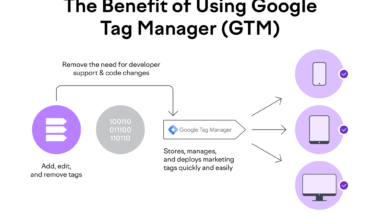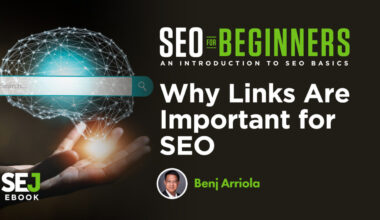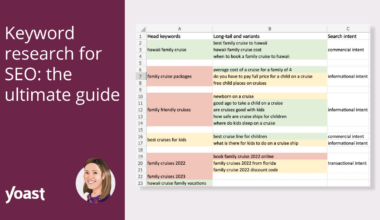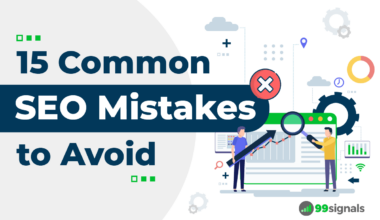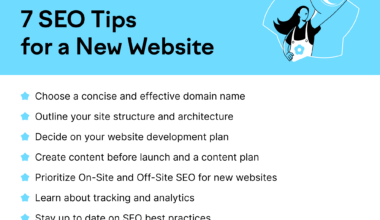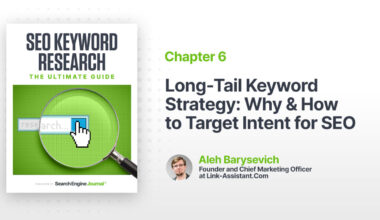Introduction: Importance of User Experience in SEO
As a website owner, you may be familiar with the term SEO (Search Engine Optimization) and how it affects your website’s visibility on search engines. However, what you might not know is that user experience (UX) is just as crucial for SEO as keyword research and link building.
User experience refers to how easy and enjoyable it is for users to navigate your website and find the information they need. A website with poor UX can result in a high bounce rate, low dwell time, and ultimately, a drop in search engine rankings.
Search engines like Google aim to provide the best possible results to their users. This means that they prioritize websites that offer a great user experience. In fact, Google’s algorithm considers several UX factors when ranking websites, including:
- Bounce rate
- Dwell time
- Mobile responsiveness
- Website speed
In this article, we will discuss how each of these factors affects SEO and how you can improve your website’s UX to achieve better search engine rankings. So, let’s dive in!
How User Experience Affects Bounce Rate
Bounce rate is the percentage of visitors who leave your website after viewing only one page. A high bounce rate indicates that visitors are not finding what they are looking for on your website, which can negatively impact your search engine rankings.
User experience plays a significant role in bounce rate. If your website is difficult to navigate, slow to load, or has poor design, visitors are more likely to leave your website without exploring further. On the other hand, a website with excellent UX can encourage visitors to stay longer and explore more pages, resulting in a lower bounce rate.
To improve your website’s UX and reduce bounce rate, consider the following tips:
1. Improve website speed: A slow-loading website can frustrate visitors and lead to higher bounce rates. Use tools like
Google PageSpeed Insights
to identify areas for improvement, such as compressing images or reducing server response time.
2. Simplify navigation: Make sure your website is easy to navigate, with a clear menu and logical page hierarchy. Visitors should be able to find what they are looking for quickly and easily.
3. Optimize content: Ensure that your content is high-quality, relevant, and engaging. Use headings, subheadings, and bullet points to break up text and make it easier to read.
4. Use responsive design: With more and more visitors accessing websites on mobile devices, it’s crucial to have a website that is optimized for mobile. Responsive design ensures that your website looks and functions well on all devices.
By improving your website’s UX, you can reduce bounce rate and improve your search engine rankings. Remember, search engines prioritize websites that offer a great user experience, so investing in UX can pay off in the long run.
The Impact of User Experience on Dwell Time
Dwell time is the amount of time visitors spend on your website after clicking on a search engine result. A longer dwell time indicates that visitors are finding your website helpful and engaging, which can have a positive impact on your search engine rankings.
User experience is a crucial factor in determining dwell time. If visitors find your website easy to navigate, visually appealing, and informative, they are more likely to stay on your website for a longer period. On the other hand, a website with poor UX can result in a shorter dwell time and higher bounce rate.
Here are some tips to improve your website’s user experience and increase dwell time:
1. Create engaging content: High-quality and relevant content is crucial for keeping visitors engaged and interested in your website. Use headings, subheadings, and bullet points to make your content more scannable and easier to read.
2. Use visuals: Incorporating visuals such as images, infographics, and videos can make your website more visually appealing and engaging. Just make sure that the visuals are relevant and load quickly.
3. Optimize website layout: Your website’s layout should be easy to navigate with a clear hierarchy. Visitors should be able to find what they are looking for quickly and easily.
4. Improve website speed: A slow-loading website can result in a shorter dwell time. Use tools like Google PageSpeed Insights to identify areas for improvement and optimize your website’s speed.
5. Use internal linking: Internal linking can help visitors navigate your website and find related content. It can also help increase dwell time by encouraging visitors to explore more pages on your website.
Improving your website’s user experience can have a positive impact on your website’s dwell time and ultimately, your search engine rankings. By creating engaging content, using visuals, optimizing your website’s layout, improving website speed, and using internal linking, you can keep visitors on your website for longer periods.
User Experience and Mobile Responsiveness
With the increasing use of mobile devices for browsing the internet, having a mobile-responsive website has become crucial not just for user experience but also for SEO. A mobile-responsive website is one that adjusts its content and layout to fit the screen size of the device used to access it.
Google has made mobile responsiveness a ranking factor, meaning that websites that are not mobile-responsive may not rank as high on search engine results pages (SERPs). In addition, visitors are more likely to leave a website that is not optimized for their mobile device, leading to a higher bounce rate and lower dwell time.
To improve your website’s mobile responsiveness, consider the following tips:
1. Use a responsive design: Using a responsive design is the most effective way to ensure that your website is mobile-responsive. Responsive design ensures that your website looks good and functions well on all devices, regardless of screen size.
2. Optimize images: Large images can slow down your website’s loading speed, which can negatively impact mobile responsiveness. Optimize your images by compressing them or using smaller file sizes.
3. Use mobile-friendly fonts: Small fonts can be difficult to read on mobile devices. Use fonts that are easy to read on small screens and avoid using fonts that are too small or too fancy.
4. Simplify navigation: Make sure your website’s navigation is easy to use on mobile devices. Use a hamburger menu or simple drop-down menu to make it easy for visitors to find what they are looking for.
5. Test your website: Use tools like Google’s Mobile-Friendly Test to check whether your website is mobile-responsive and identify areas for improvement.
By improving your website’s mobile responsiveness, you can provide a better user experience for visitors using mobile devices and improve your search engine rankings. Remember, mobile responsiveness is a crucial factor in determining bounce rate and dwell time, so investing in mobile optimization can pay off in the long run.
How User Experience Affects Website Speed
Website speed is an essential factor in user experience. Slow-loading websites can frustrate visitors, leading to higher bounce rates, shorter dwell times, and ultimately, lower search engine rankings. In fact, Google has stated that website speed is a ranking factor, meaning that faster websites are more likely to rank higher on search engine results pages (SERPs).
User experience can affect website speed in several ways. Here are some of the common ways user experience impacts website speed:
1. Images and videos: Large images and videos can slow down website speed. While visuals are essential for engaging content, they should be optimized for fast loading. To optimize images, compress them or use smaller file sizes. Use video hosting platforms like YouTube or Vimeo to embed videos instead of hosting them on your website.
2. Excessive ads: Too many ads can slow down website speed, leading to a poor user experience. If you must use ads, use them in moderation, and make sure they are optimized for fast loading.
3. Bloated code: Bloated code can slow down website speed. Make sure your website’s code is clean, concise, and optimized for fast loading. Use tools like Google’s PageSpeed Insights to identify areas for improvement.
4. Inefficient hosting: Your website’s hosting provider can impact website speed. Make sure you choose a hosting provider that is fast, reliable, and optimized for your website’s needs.
Improving user experience can result in faster website speed. Here are some tips to improve user experience and website speed:
1. Use a content delivery network (CDN): A CDN can improve website speed by caching content and serving it from the nearest server to the user. This can significantly reduce website load times.
2. Optimize website design: A clean and simple website design can improve website speed. Use minimal design elements and optimize images and videos for fast loading.
3. Minimize HTTP requests: Each element on your website requires an HTTP request, which can slow down website speed. Minimize HTTP requests by using fewer elements and combining multiple files.
4. Use browser caching: Browser caching can improve website speed by storing frequently accessed content on the user’s device. This means that subsequent visits to your website will load faster.
By improving user experience and website speed, you can provide a better experience for visitors and improve your search engine rankings. Remember, website speed is a ranking factor, and faster websites are more likely to rank higher on SERPs.
Final Thought: Improving User Experience for Better SEO Results
In today’s digital age, providing a great user experience is crucial for the success of your website. Not only does it improve customer satisfaction, but it also impacts your search engine rankings. By focusing on improving user experience, you can achieve better SEO results and drive more traffic to your website.
To improve user experience for better SEO results, consider the following tips:
1. Conduct user research: Understanding your audience is the first step in improving user experience. Conduct user research to identify their needs, preferences, and pain points. Use this information to design a website that meets their needs and expectations.
2. Use clear and concise language: Use language that is easy to understand and avoid using jargon or technical terms that your audience may not be familiar with. Use headings, subheadings, and bullet points to break up text and make it easier to read.
3. Optimize website design: A clean and simple website design can improve user experience and website speed. Use minimal design elements and optimize images and videos for fast loading.
4. Provide relevant and high-quality content: Ensure that your content is high-quality, relevant, and engaging. Use headings, subheadings, and bullet points to break up text and make it easier to read.
5. Test website usability: Test your website’s usability to identify areas for improvement. Use tools like Google Analytics to track user behavior and identify areas that need improvement.
By improving user experience, you can reduce bounce rate, increase dwell time, and improve website speed, all of which can positively impact your search engine rankings. Remember, a website that provides a great user experience is more likely to rank higher on search engine results pages, resulting in more traffic and better SEO results.
In conclusion, improving user experience is crucial for better SEO results. By focusing on providing a great user experience, you can achieve higher search engine rankings, more traffic, and ultimately, more conversions. Invest in improving user experience today to reap the benefits in the long run.











